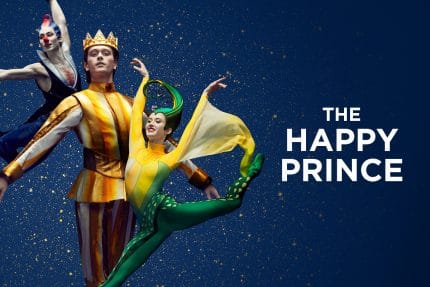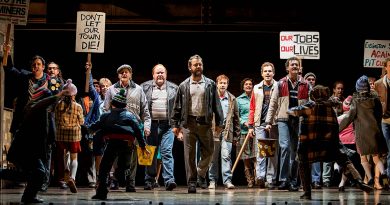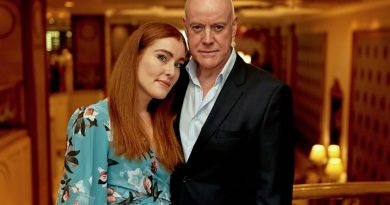A Year of Limitless Possibilities
In his 20th and final year as artistic director of The Australian Ballet, David McAllister has programmed Australian and world premieres alongside established works that made an indelible mark on modern dance history.
First up, it’s Oscar Wilde’s lyrical story of a statue who gives his all to help humanity is full of poetic beauty, sly humour and sharp social commentary. In 2020 Graeme Murphy, who created The Australian Ballet’s acclaimed modern interpretations of Swan Lake and The Nutcracker, turns his flair for transformative storytelling to Wilde’s moving tale.
Murphy’s distinctive choreographic style will animate the golden Prince, his loyal friend the Swallow, the seductive Reed – and bring a particularly Aussie flavour to Wilde’s happy ending.
This all-Australian premiere will feature a specially commissioned score from the renowned composer Christopher Gordon, who wrote the scores for the films Mao’s Last Dancer and Master and Commander, alongside the work of award-winning artist and director Kim Carpenter, who adapted the story and created the colourful design for the ballet
Playful and poignant, The Happy Prince will capture children’s imagination with its vivid spectacle and adults’ attention with its timely message: a kind heart shines brighter than gold.
Next up, Ballet meets The White Stripes. Pointes meet polka dots. Britain’s leading light meets Australia’s rising star in an electrifying program of innovative dance.
For more than a decade, Wayne McGregor has been performing fierce and thrilling experiments on ballet, taking it next-level with punk pecks and twitches, whip-lash spines, warp-speed leaps and hyper-stretched lines. As well as being The Royal Ballet’s resident choreographer, this wide-ranging creative has made movement for Radiohead and the Chemical Brothers, the Harry Potter movies and fashion designer Gareth Pugh. In his one-act works Chroma and Dyad 1929, McGregor strips back ballet and builds it anew.
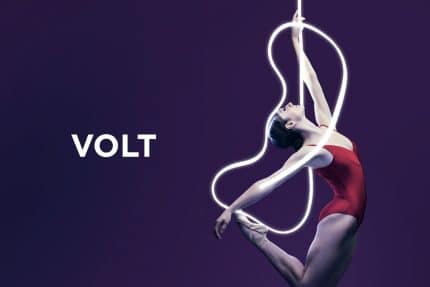
Alice Topp, resident choreographer of The Australian Ballet, first worked with McGregor on the creation of Dyad 1929, and later performed in his Chroma and Infra. These experiences, she says, unlocked her confidence and creativity. “I’d spent years as one of 24 swans, trying to blend into a perfect line. Wayne freed me to find and believe in my own artistic voice – the greatest gift I’ve ever received.” Topp, who recently won acclaim for her Helpmann Award-winning work Aurum at home and in New York, will continue her love affair with the music of Ludovico Einaudi and will team with long-time collaborator Jon Buswell to design the lighting and staging for Logos, a work about armouring ourselves against modern demons: “our predators, pressures, climate and, at times, ourselves.”
McGregor. Topp. Modern dance that turns it on.
Next – Leo Tolstoy’s immortal novel becomes an epic ballet. Cinematic staging, Hollywood-worthy costumes and Yuri Possokhov’s mesmerising choreography illuminate the tragedy of Anna Karenina, whose desire brings about her ruin.
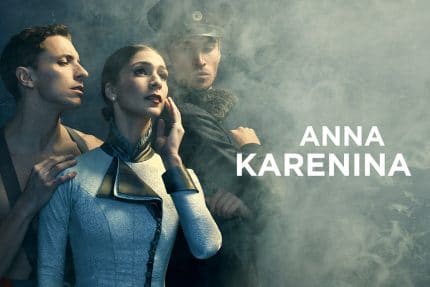
Yuri Possokhov, formerly a principal dancer with Bolshoi Ballet and San Francisco Ballet, has choreographed works on major companies around the world. His Anna Karenina, faithful to Tolstoy’s novel, features Finn Ross’ projections (including real-time film of the dancers taken during the performance) and Tom Pye’s set and costume designs, which conjure the opulence of the era with modern style. The specially commissioned orchestral score by Ilya Demutsky gestures towards the rich grandeur of Tchaikovsky and Prokofiev, and includes a mezzo soprano singing live on stage.
Then – Drama, laughter and pure physical power: Molto offers two works by our resident choreographers Stephen Baynes and Tim Harbour and one by Frederick Ashton, a giant of 20th-century dance.

Tim Harbour’s Squander and Glory is set to Michael Gordon’s Weather One (which Harbour describes as “like The Four Seasons played by Conan the Barbarian”) and its lightning-fast, complex movement for 14 dancers, multiplied to 28 by architect Kelvin Ho’s sleek mirrored set, plays with ideas of excess energy, pressure and release.
Stephen Baynes’ Molto Vivace is a giddy frolic in a garden, a light-hearted, tender look at folly and flirting, complete with streetwise cupids and a design that goes from pristine white to neon bright as manners turn to mayhem. The music of Handel provides the perfect accompaniment to both the madcap humour and the transcendent final pas de deux.
This diverse trio of stellar works will tick all your ballet boxes.
And Finally – In 1900, the master choreographer Marius Petipa – whose works include Swan Lake, The Sleeping Beauty, Don Quixote and La Bayadère– created Harlequinade, a sweet-hearted romp based on commedia dell’arte characters, for the Tsar and Tsarina. It was a hit, but after the 1917 Revolution the full-length ballet disappeared from the stage.
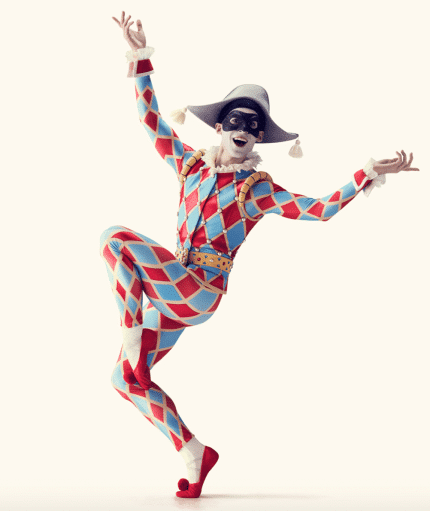
Harlequin and Columbine are in love, but her father, who wants her to marry a rich older man, has her locked up by his loyal servant, Pierrot. Pierrot’s wife, sympathetic to the young couple, helps her escape, and a Good Fairy gives Harlequin a magical slap stick that helps him triumph over the odds and win Columbine’s hand.
Robert Perdziola’s extravagant, colour-saturated design for Harlequinade’s cast of thousands (including more than 30 children) is based on his study of the original sets and costumes. The music is by Riccardo Drigo, a close collaborator of Tchaikovsky’s, who arranged the score for Swan Lake.
After his century-long sleep, the irrepressible Harlequin is wide awake and ready to charm ballet lovers of all ages in this Melbourne-exclusive season.
“Everybody loves to dance, here we show the joy and wonder that ballet can inspire in all Australians. When we were imagining what our 2020 Season would look like, we saw endless red horizons and blue skies so we headed off to the stunning Broken Hill to highlight our iconic ‘Aussie’ landscape.”


